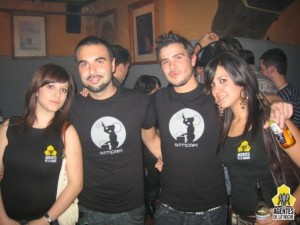Sorry to the non-spanish speakers this is an anounce for the people who feel more confortable speaking Spanish than English and all the people who may know people that feel like that.
Muy buenas 🙂
Para quienes no lo sepan, Orca es el proyecto libre principal en torno a las tecnologías de accesibilidad en el escritorio. Últimamente se está haciendo un gran esfuerzo por mejorar este aspecto y se quiere obtener todo el feedback posible.
Como la comunidad hispana es una de las más implicadas en este y otros aspectos del escritorio se acaba de abrir una lista en español para que puedan participar más activamente dando experiencias de usuario. A continuación les copio el anuncio oficial para que tengan la información y la difundan en los círculos que crean conveniente.
Muchísimas gracias 🙂
Nueva lista de correo de Orca en español
Estamos encantados de anunciar la creación de la lista orca-es-list, una lista de correo oficial de GNOME para los usuarios hispanohablantes del revisor de pantalla Orca.
Facilitar la participación a usuarios no-angloparlantes con la comunidad de Orca ha sido durante mucho tiempo uno de los objetivos, no conseguidos hasta la fecha, del equipo de desarrollo de Orca.
Ahora, gracias al apoyo del Consorcio Fernando de los Ríos, la participación continuada de los desarrolladores de Emergya, y la voluntad de usuarios hispanohablantes de Orca de contribuir con su tiempo y conocimiento, el equipo de desarrollo de Orca está en posición de mantener dicha lista de correo.
Para suscribirse basta con rellenar el siguiente formulario:
https://mail.gnome.org/mailman/listinfo/orca-es-list
Estamos muy agradecidos a todos los que han hecho posible esta nueva lista de correo, incluyendo a GNOME por facilitar la infraestructura de hosting. ¡Esperamos verte por la orca-es-list!
El anuncio en inglés en
http://mail.gnome.org/archives/orca-list/2011-February/msg00012.html
–El equipo de desarrollo de Orca
NOTA: El anuncio original de esta lista, aparte de en la lista en inglés de Orca ha sido en este post de uno Alejandro Leiva, uno de los mantenedores del proyecto.


